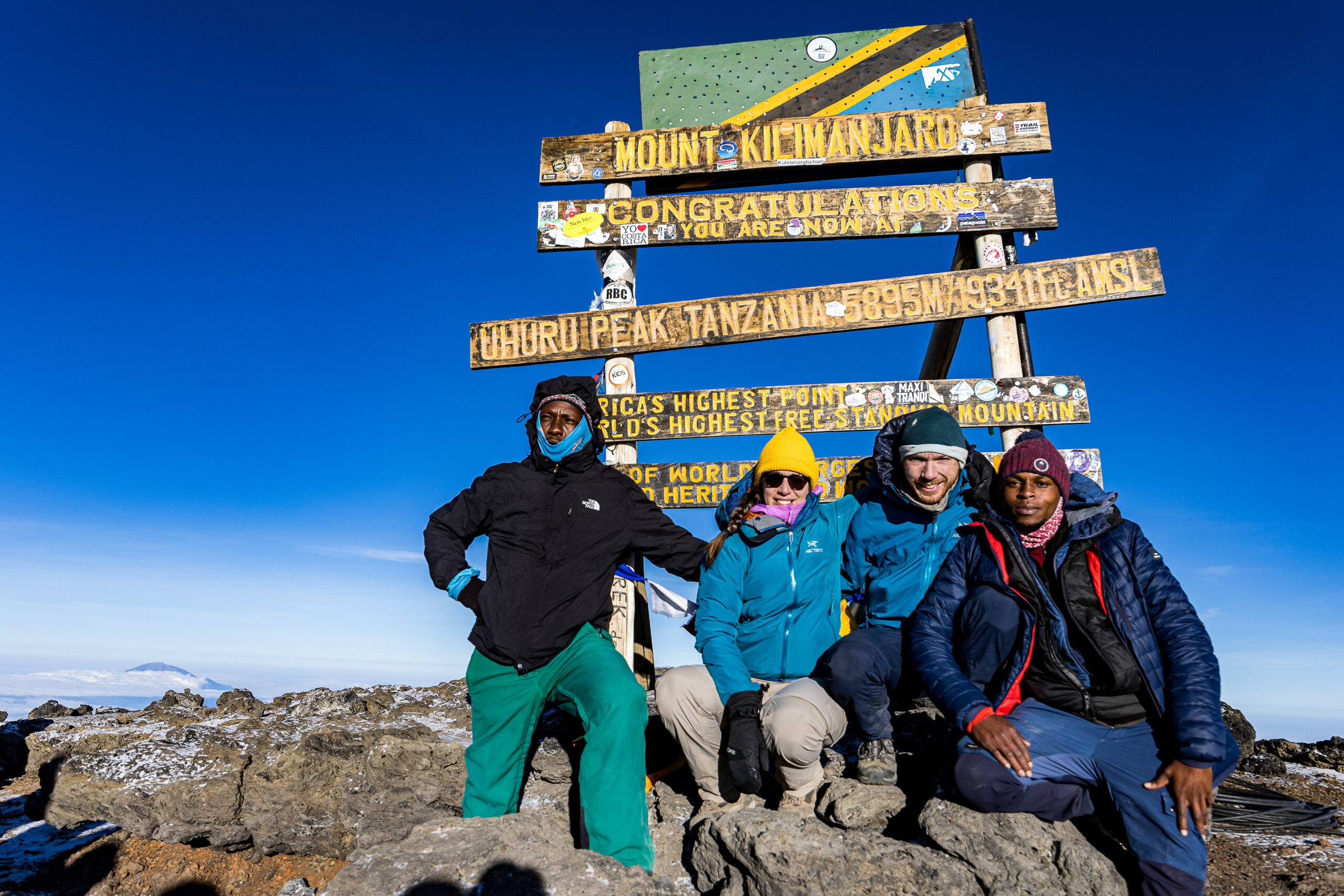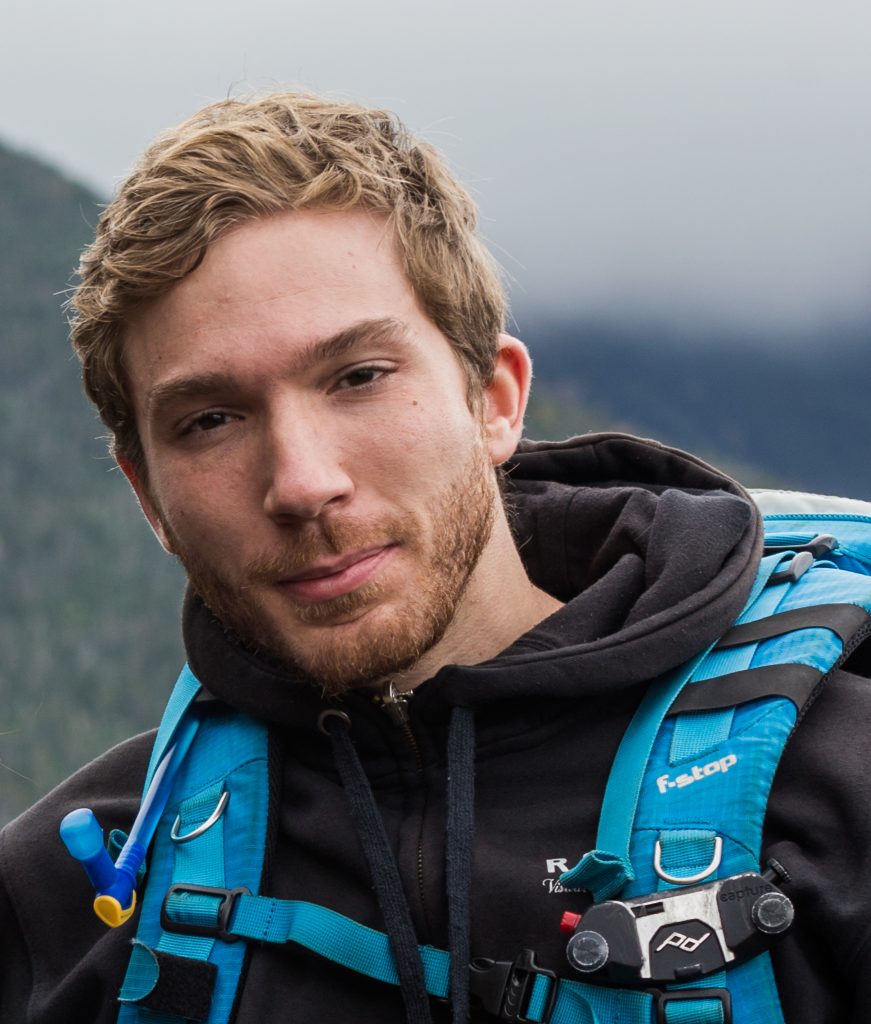Reaching the summit of Kilimanjaro is much more than a simple hike: it's a personal challenge, a life-changing adventure and an immersion in spectacular scenery.
Standing proudly at 5,895 metres, this volcanic giant is the highest point in Africa and attracts thousands of climbing enthusiasts every year. But beware, climbing the "Roof of Africa" requires more than just courage: good preparation is very useful, if not essential, to maximize your chances of success and get the most out of the experience.
Based on my personal experience, I'm going to give you my keys to making this climb a success. Are you ready to discover how to turn this dream into reality?
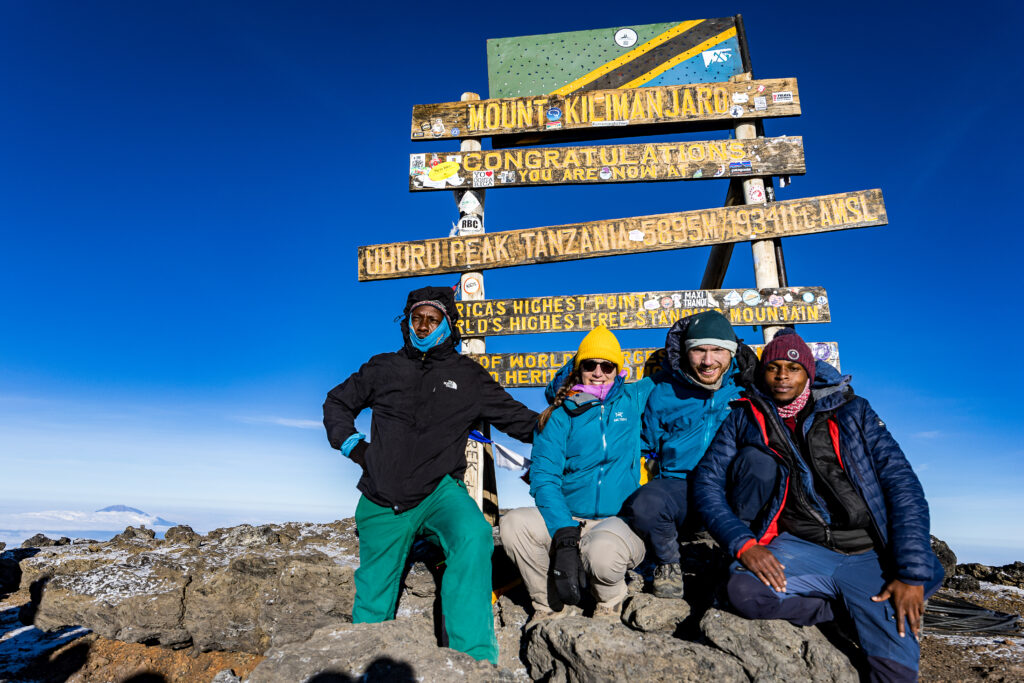
Preparing to climb Kilimanjaro
Climbing Kilimanjaro is a unique experience, but one that requires meticulous preparation. It's not just a matter of putting on your hiking boots and setting off - every detail counts to ensure not only the pleasure, but also the safety and success of your adventure.
Choosing the right season to climb Kilimanjaro
The choice of season is an important detail to consider. The best times to climb Kilimanjaro coincide with the dry seasons in Tanzania:
- January to early March These months represent the first dry season. The days are generally warm and sunny, perfect for enjoying the unobstructed views.
- June to October Winter: This period offers stable weather and is considered ideal for hiking. Night-time temperatures can be chilly, but the views are spectacular.
As far as possible, avoid the months of April and May, when heavy rains make the trails muddy and slippery. If you like the idea of a less crowded experience, consider traveling in low season (November to December), but be prepared for unpredictable weather conditions.
Outside the dry season, it will also be more difficult to find agencies to accompany you on the climb.
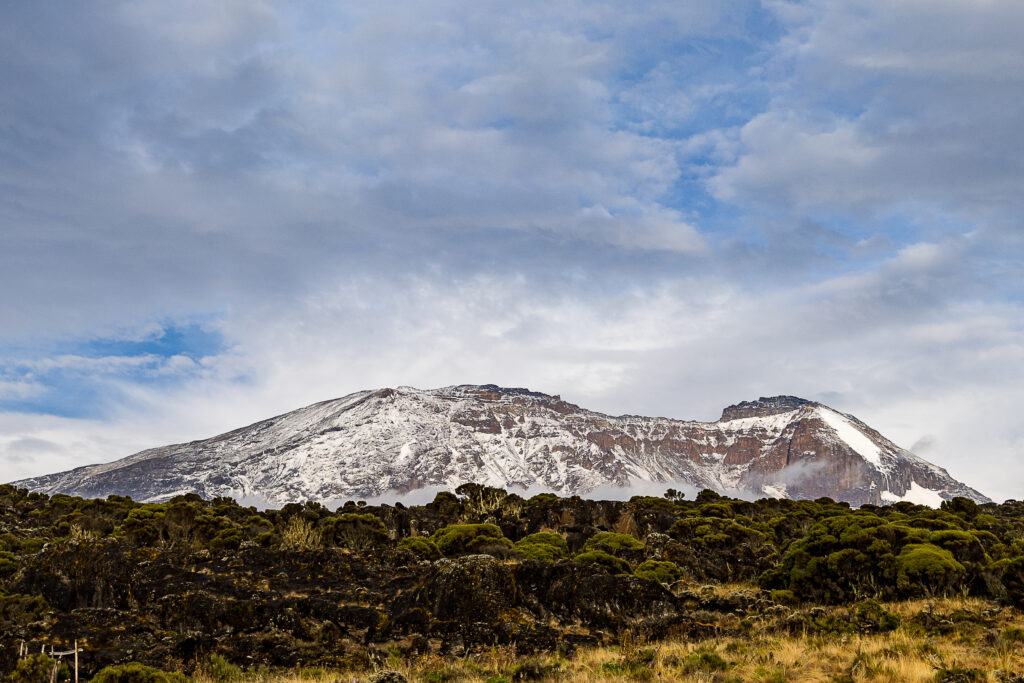
Essential equipment for Kilimanjaro
You can't climb Kilimanjaro without the right equipment. We were surprised by the cold at night in October, even though we're from Quebec.
For the climb, you'll probably be faced with extreme variations in temperature and conditions. These will also depend on when you'll be there, so don't hesitate to ask your agency for more information. They should be able to provide you with a detailed equipment list.
However, here's what I recommend you have in any case, even if it's not listed by your agency:
- Layered clothing :
- Thermal underwear
- Polar fleeces or light sweaters
- Waterproof and windproof jacket
- Down jacket for cold nights
- Sturdy hiking boots : Opt for waterproof shoes that have already been worn to avoid blisters.
- Essential accessories :
- Hat
- Sunglasses
- Sun cream
- Warm gloves
- Sleeping bag suitable for extreme temperatures (for us in October, a -17 degrees Celsius bag was recommended)
- Headlamps with spare batteries (mainly for summit day)
- An inflatable or travel pillow
- Additional equipment :
- Walking sticks,
- Bottles/gourds (at least 3 liters, ideally 3x 1L for easier management of purification tablets)
- Avoid water bags if you're climbing in very cold weather, as their straws tend to freeze and you lose access to your water.
- Water purification tablets
- A compact first-aid kit.
Ideally, prepare everything several weeks in advance and test your equipment to avoid any nasty surprises!
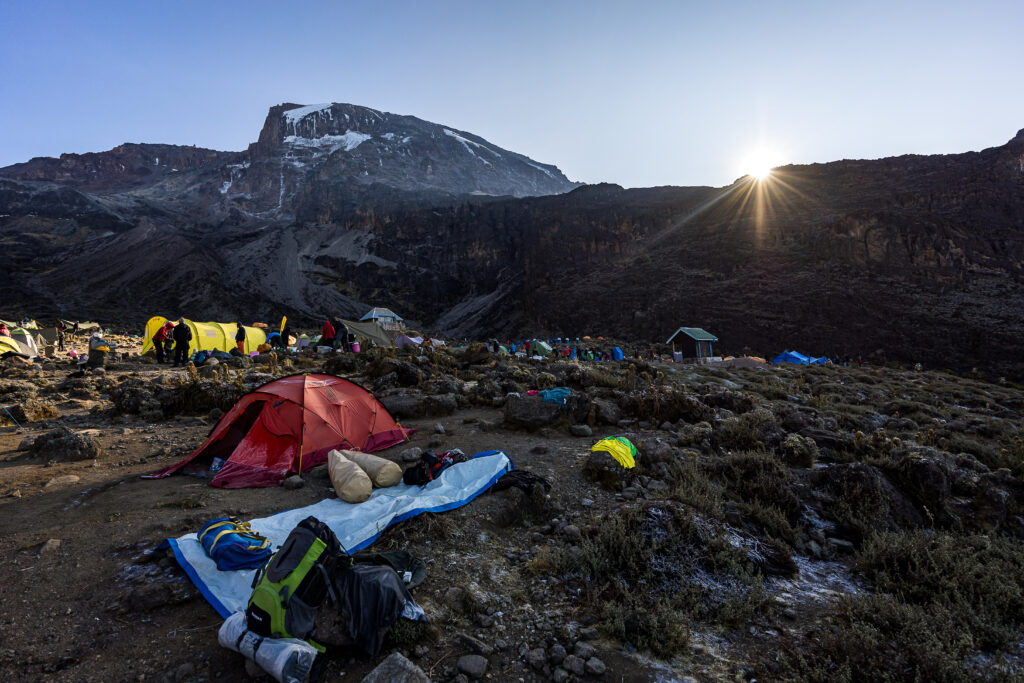
Fitness requirements for Kilimanjaro
You don't have to be an Olympic athlete to climb this mountain, but you do need to be in good physical condition. You'll be walking for days at a time at high altitudes, where oxygen is in short supply, with a certain amount of ascent.
A good cardio system will be your best ally. To stack the odds in your favor, I recommend you do some walking, hiking or running, ideally in the mountains, even 200-300m of ascent and descent. That's the closest you'll get to the effort you'll have to put in. Cycling and swimming can also work well.
Here are a few tips to help you improve your physical condition:
- Train progressively If you're returning to physical activity, take it slowly, and increase the volume and intensity of your activity as the weeks go by. Otherwise, you run a high risk of injury.
- Strengthen your stamina : Focus on cardio exercises such as running, cycling or stair climbing.
- Simulate theclimbing: The best training is the one that resembles your future project. In this case, walking, at altitude, with elevation gain.
- If possible, take a hike with some elevation gain. Possibly with a loaded backpack, to add a little difficulty, even if your pack shouldn't be too heavy for the climb. And if you have the opportunity, at altitude, to accustom your body to reduced effort in an oxygenated environment.
- Eating well. Pay particular attention to your diet before departure to maximize your energy reserves.
- Sleep well. Sleep and recuperation are essential levers for your body to adapt to training and avoid injury. As far as possible, try to get a good night's sleep before your trip, as starting the climb tired can be enough to make you fail.
Even if Kilimanjaro doesn't require impeccable physical condition, the fitter you are, the more likely you are to succeed (with no guarantee of 100 %) and the better your experience on the mountain.
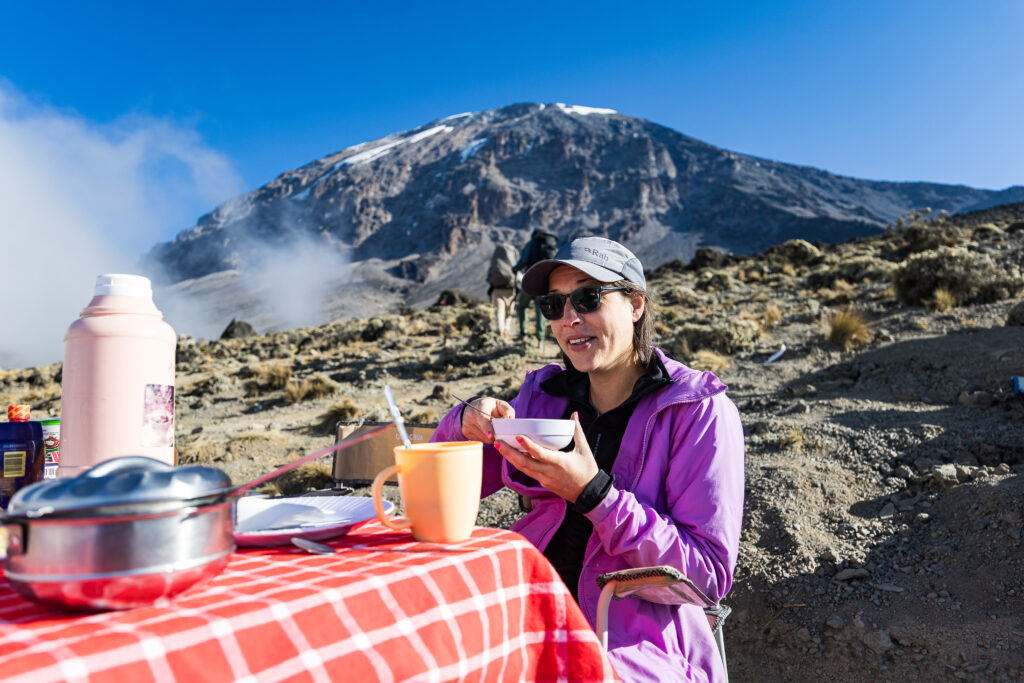
Documents and permits required
Without the right documents, you won't be able to start your climb. Carefully prepare the following items:
- Valid passport It must be valid for at least 6 months after your planned return.
- Tanzanian visa You should have it either in advance via the Internet or on arrival at the airport in Tanzania.
- Permitsascension: generally included in the fees paid to your trek operator, who should be responsible for obtaining it.
- Yellow fever vaccination certificate : It's not compulsory in the country in principle, but our agency required it.
- Proof of travel insurance Make sure it covers high-altitude medical evacuations. I always use Tugo for my mountain trips.
Also take care to keep digital copies of your papers on your phone or in an accessible cloud, this can be very useful in case of loss. Note that there is no network everywhere in Tanzania, so a paper version of some papers may be useful.
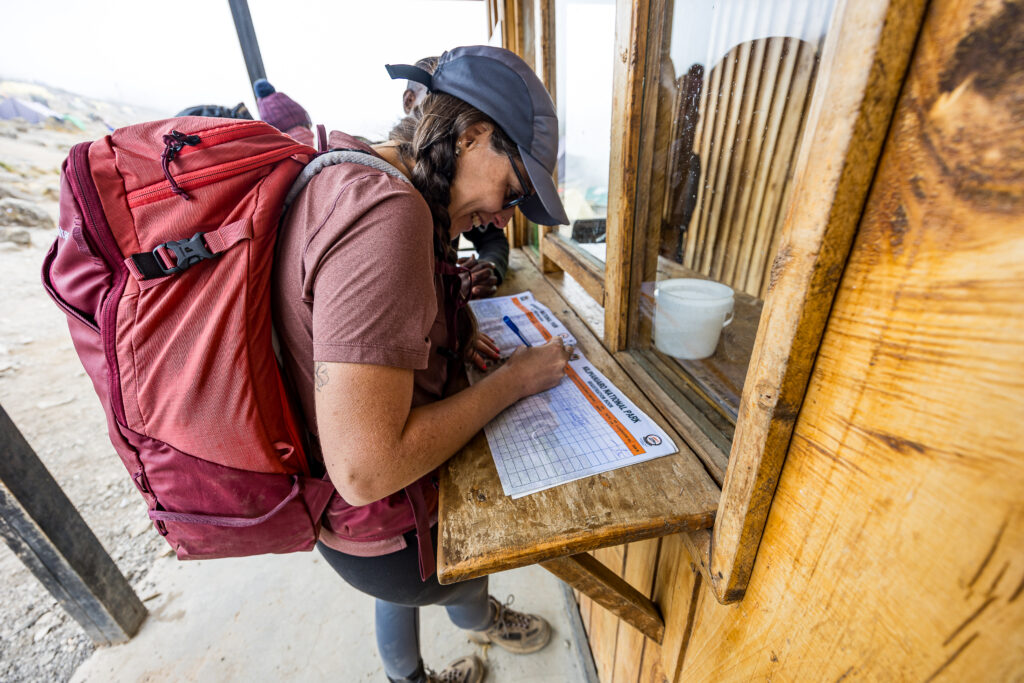
Kilimanjaro climbing routes
To reach the summit of Kilimanjaro, there is no single route, but a multitude of itineraries. This variety of choices allows you to tailor your adventure to your desires and abilities. Here's an overview of the main routes.
Route Marangu
This is the historic route and also the most popular (around 40 % of visitors use it). Nicknamed "the Coca-Cola route" due to the possibility of buying the drink along the way, the Marangu route is known as the most direct/fast and "simple" route up Kilimanjaro. It is often chosen by those seeking a more comfortable route.
- Hosting Unlike other routes, Marangu offers huts with cots, ideal for hikers who prefer to avoid tents.
- Duration : Generally, the ascent and descent take 5 to 6 days.
- Landscapes The route takes you through lush tropical forests before reaching arid volcanic zones.
However, its popularity can also mean more crowded trails, which can limit the immersive experience. - Distance Approx. 72 km
Advantages :
- Fast
- Comfortable
Disadvantages :
- Faster climbing can sometimes make acclimatization more complicated.
- Lowest success rate
- It's a round trip (the ascent and descent are on the same track).
My opinion:
I'd advise you to avoid this route. The altitude is really the biggest challenge of this climb, and I think it's a bad idea to take a route that won't give you time to acclimatize as well as possible. For me, the only exception is if you're already acclimatized, having done the Meru before or other mountains, in which case the risk of failure should be much reduced.
If you absolutely must use this route, because you don't want to sleep in a tent for example, ask your agency for a 6-day ascent rather than 5.
The success rate is the lowest on this route, because acclimatization is, in my opinion, too rapid, but also because many inexperienced hikers go into it underestimating the difficulties associated with thealtitude.
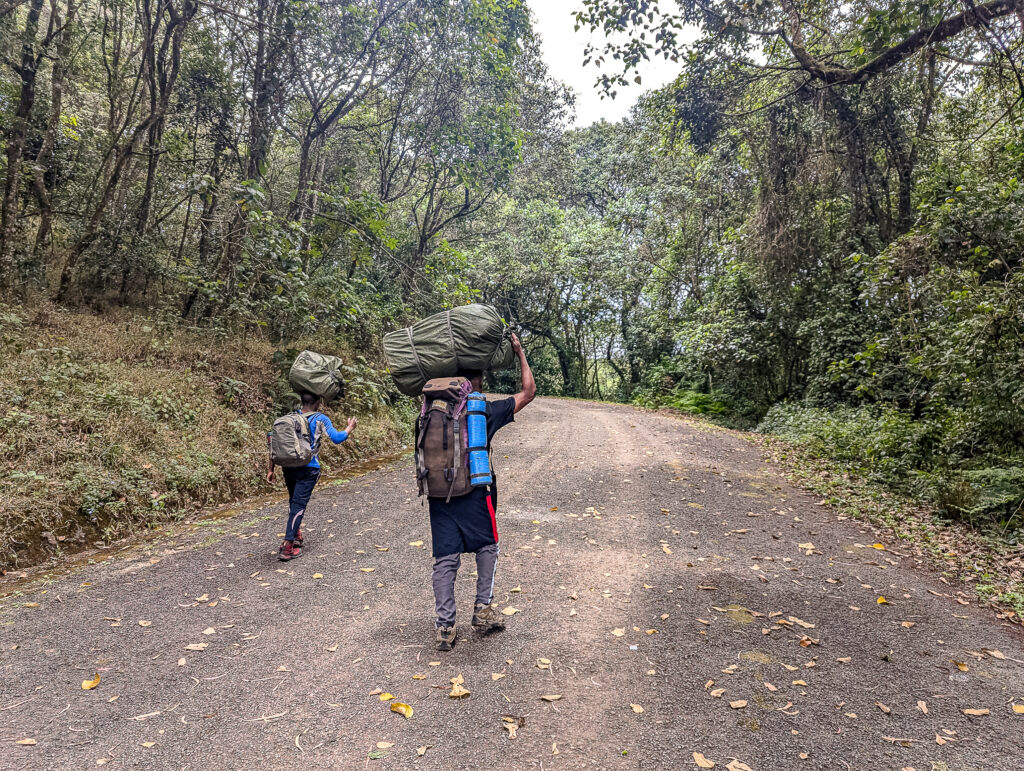
Machame road
Considered one of the most scenic routes, Machame is appreciated for its spectacular views along the way. The route passes through four different types of vegetation. It is nicknamed the "Whisky Route" because of its more demanding nature. It remains the second most popular route, and you'll be far from alone on your walk. It offers good acclimatization, taking 6 to 7 days to complete and allowing you to climb during the day and sleep lower at night.
The Machame road descends via the Mweka road on the way down, so you're not making a round trip.
- Difficulty The panoramic views are well worth the effort.
- Duration The trek generally lasts 6 to 7 days, allowing for gradual acclimatization.
- Highlights From forests to sparkling glaciers, each stage offers breathtaking scenery.
It remains an ideal option if you're in good physical condition and want a memorable visual experience. - Distance Approx. 62 km
Advantages :
- Variety of landscapes
- Good acclimatization
Disadvantages :
- Longest, in number of days
- More difficult, with some passages that can make you dizzy
My opinion:
This is the route we chose for our ascent. The route is well-balanced, and the scenery is really beautiful and different all along the way. With the help of the porters, the days aren't all that difficult - sometimes they even seem almost too short. Apart from the summit day, we had no altitude-related symptoms whatsoever, apart from the classic shortness of breath.
I think the Machame route is a really good one for climbing Kilimanjaro. It's still a popular route, so it's often crowded, but apart from one or two slightly more difficult stretches where traffic jams formed, it wasn't really a worry.
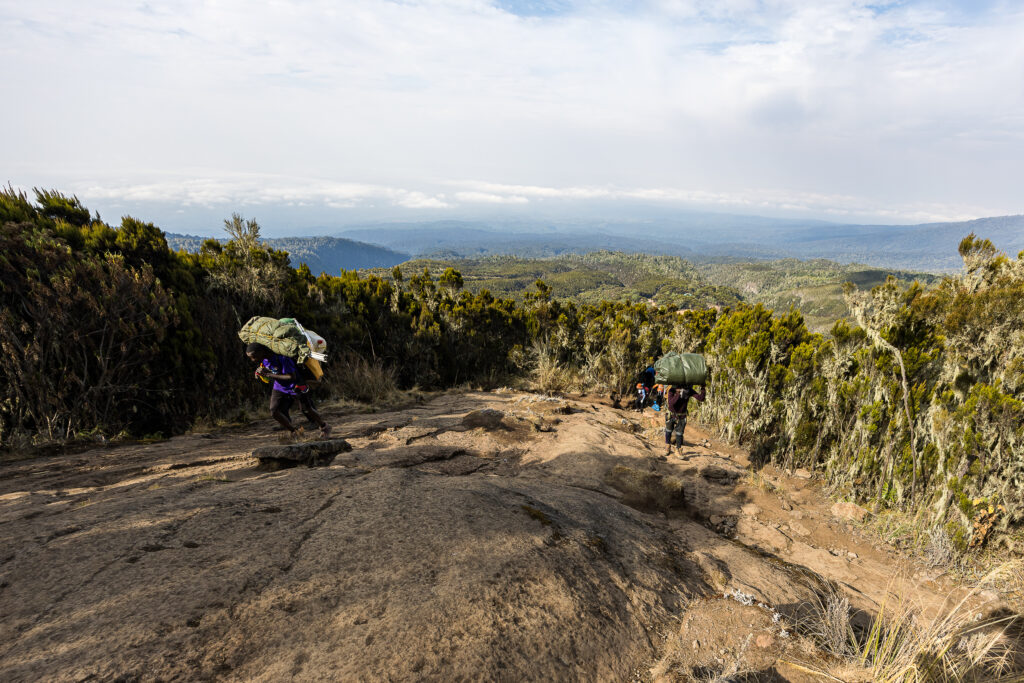
Route Lemosho
If you're dreaming of a more secluded climb, a little further away from the crowds, the Lemosho route could well be your perfect choice. The real difference is on the first few days of the route, where you'll start in a more secluded area before joining the Machame route or the "Northen Circuit" before descending via the Mweka.
On the other hand, it's the most difficult route, but offers one of the highest success rates by allowing very good acclimatization. It attracts those who want to dive in wild landscapes with maximum tranquillity.
- Duration The trek is spread over 7 to 8 days, offering extra time for acclimatization.
- Nature sauvage : At the start of the route, you'll pass through areas rich in wildlife, such as buffalo and antelope, in remote forests.
- Features Although longer, this route is often appreciated for its relaxed pace and quiet campsites.
- Distance Approx. 70 km
Advantages :
- Fewer people
- Very good acclimatization
- High success rate
Disadvantages :
- Longer
- More difficult
My opinion:
If I had to go back to Kilimanjaro, this is probably a route I'd try. In my opinion, it's similar to the Machame route, but better.
But remember that it's 7 to 8 days of trekking, sleeping in tents and so on. So if this is your first trekking experience, you may prefer a shorter trek or one with a little more comfort.
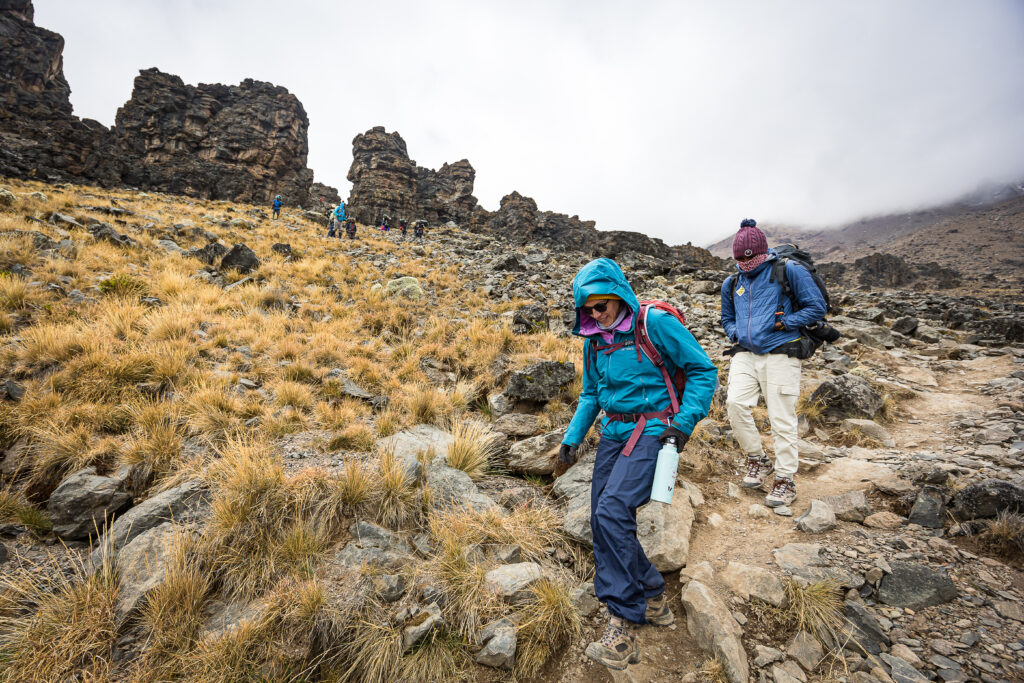
Route Rongai
I don'tI haven't come across anyone who has done this, so I have less information and am basing my opinion solely on what I know.I've read about him.
It's the only one that starts on the north side of the mountain, close to the Kenyan border. The Rongai route is perfect for those looking for less-travelled trails while keeping the route moderate.
- Tranquillity Rongai is much less crowded, allowing a more intimate connection with nature.
- Duration A typical itinerary lasts 6 to 7 days.
- Weather conditions : From the north, this route is drier, ideal for rainy seasons.
A little less spectacular in terms of the variety of landscapes, it is nevertheless a fantastic option for avoiding the crowds.
Route Shira
I don'tI haven't come across anyone who has done this, so I have less information and am basing my opinion solely on what I know.I've read about him.
The Shira route shares the same starting point as Lemosho, but begins at a higher altitude due to a vehicle transfer. This means that adaptation to altitude is a little more difficult at the start of the trek.
- Varied landscapes The first few days are filled with magnificent plateaus and open vistas.
- High level of difficulty Although short, this route requires rapid acclimatization due to its high starting altitude.
- Recommendation The "high altitude" option: best suited to experienced hikers or those with previous high-altitude experience.
With these varied options, you should be able to find the route that suits your style and expectations. Do you feel ready to choose your route yet? If you have any questions, please don't hesitate to ask.
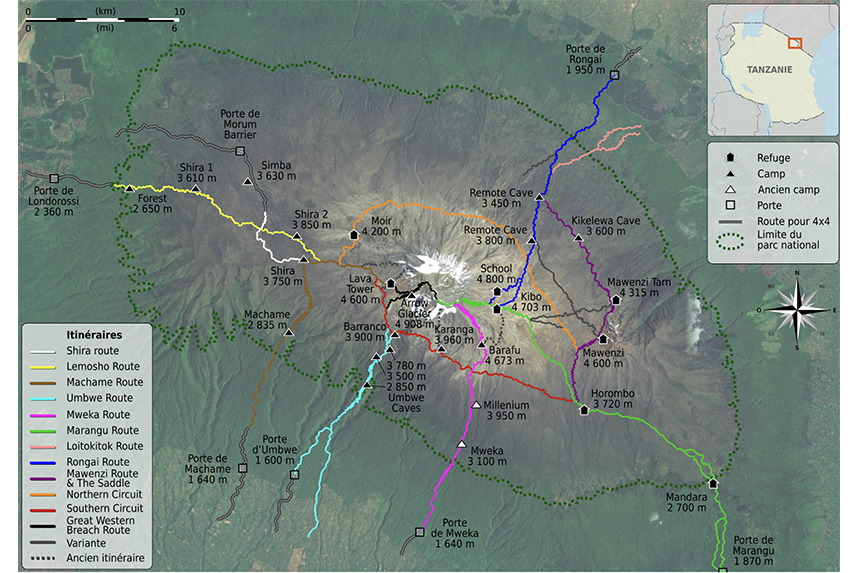
Climbing Kilimanjaro: what to expect
Climbing Kilimanjaro is much more than a physical effort. Each step brings you closer not only to the summit, but also to unforgettable landscapes, personal introspection and unique challenges. Here's a glimpse of what awaits you on this adventure.
Stages of the ascent via the Machame route
The Kilimanjaro ascent is divided into several stages, each offering specific challenges and unique landscapes. Although the experience is different depending on the route taken, here's what to expect as you progress along the Machame route:
1. Machame Gate to Machame Camp (Day 1)
The adventure begins at the Machame gate, some 1,800 metres above sea level, where check-in formalities are carried out. You then set off through dense, lush rainforest, home to a variety of wildlife: black and white colobus monkeys, blue monkeys, as well as numerous species of birds. This stage lasts around 5-7 hours and ends at Machame camp (approx. 2,835 m), where you'll get your first glimpse of the mountain.
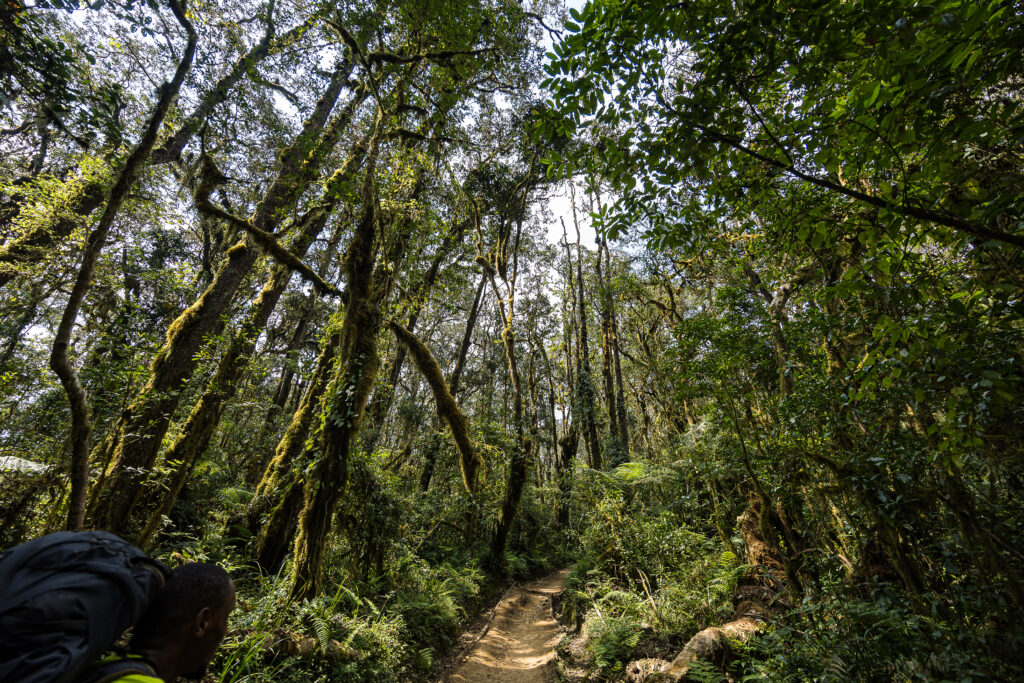
2. Machame Camp to Shira Camp (2nd day))
Leaving the forest, you enter an area of moorland and heather, where the landscape changes: shrubs replace trees, and plants such as the giant lobelia appear. The climb becomes steeper, but magnificent views of the snow-capped slopes of Kilimanjaro and the surrounding valleys compensate for the effort. The day ends at Shira Camp, situated on a plateau at around 3,750 metres altitude.
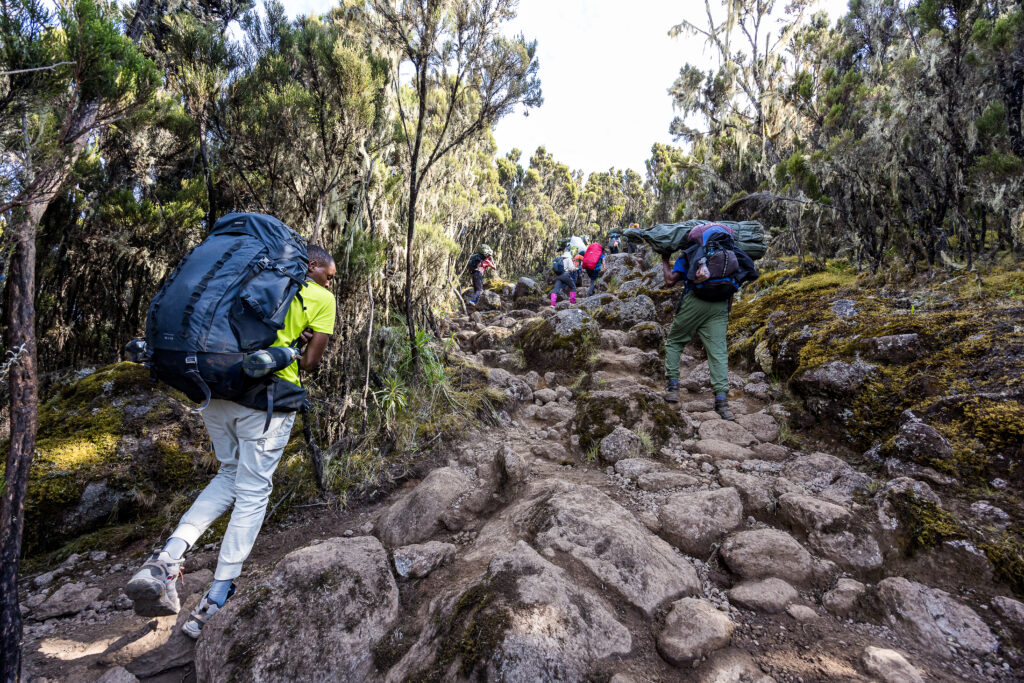
3. Shira Camp to Barranco Camp via Lava Tower (3rd day))
This stage is crucial for acclimatization. You climb to Lava Tower (4,600 metres) before descending to Barranco camp (3,950 metres). This "climb high, sleep low" is one of the best ways to prepare your body for altitude. The area becomes increasingly arid, resembling an alpine desert. You'll be surrounded by impressive volcanic rock formations, but the depletion of oxygen is beginning to make itself felt. It's also from Lava Tower onwards that you'll see a few more people, as the Machame and Lemosho routes merge here.
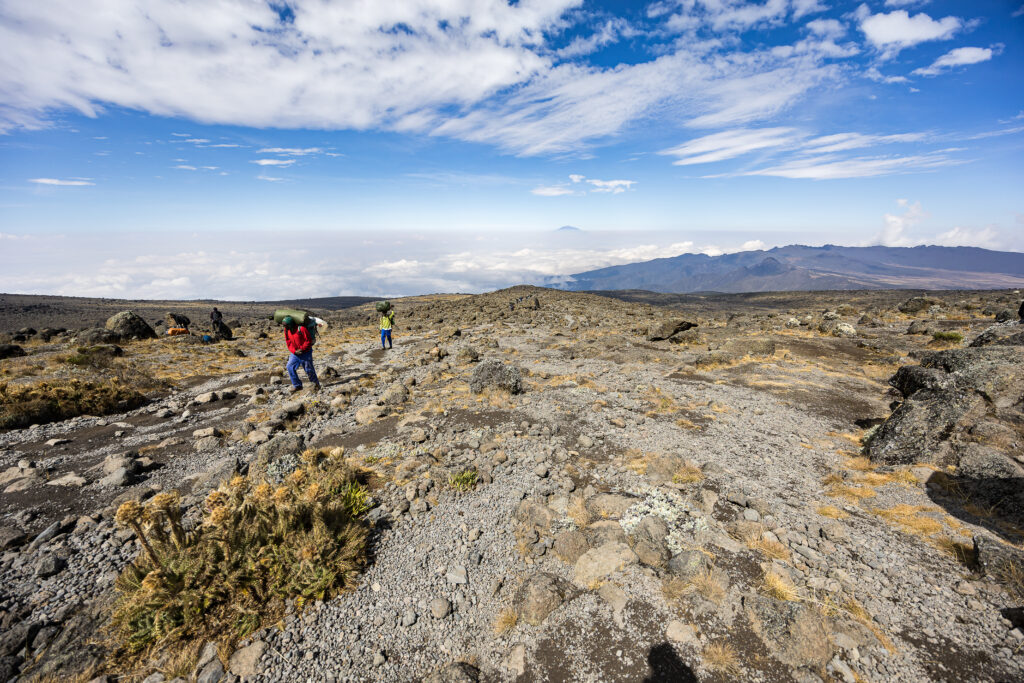
4. Barranco Camp to Karanga Camp (Day 4))
The day begins with an ascent of the famous Barranco Wall. A steep and slightly technical climb, sometimes requiring the use of the hands, that offers spectacular views. Once over this wall, the trail undulates through valleys and ridges, with some very fine views. You reach Karanga camp (4,035 m) after around 4-5 hours' walking.
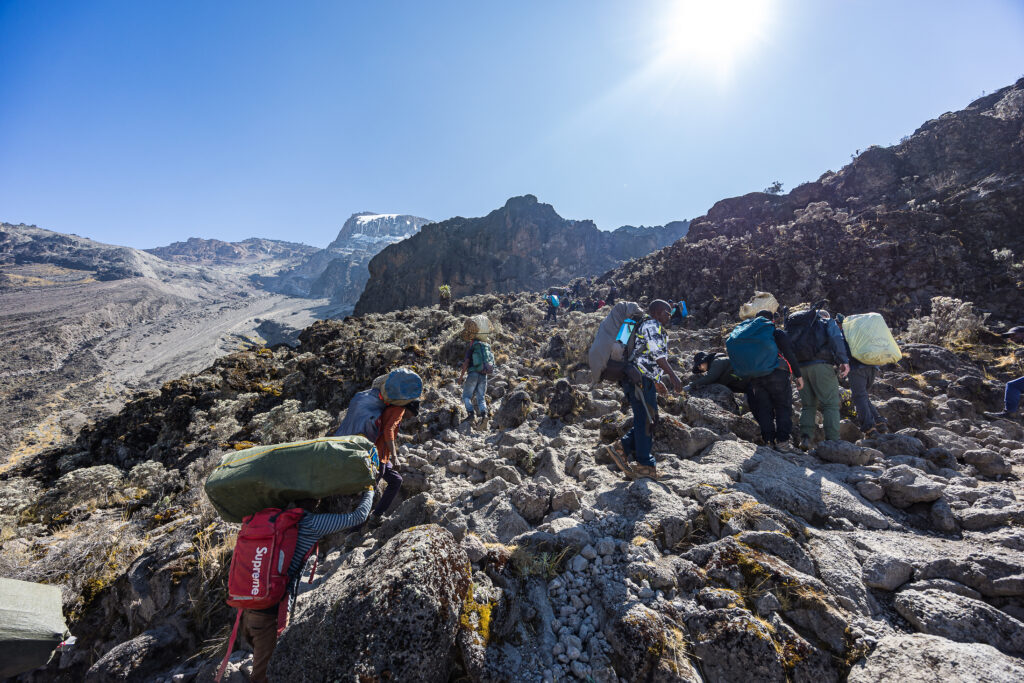
5. Karanga Camp to Barafu Camp (Day 5))
The trek to Barafu Camp, at 4,640 metres, is a steady climb through an increasingly austere landscape. This camp is the starting point for the final ascent to Uhuru Peak. The afternoon is devoted to rest and preparation for the big stage ahead. The camp is bustling with activity, a veritable anthill, because while you're setting up your camp, the people who made the summit during the night are dismantling theirs for the descent.
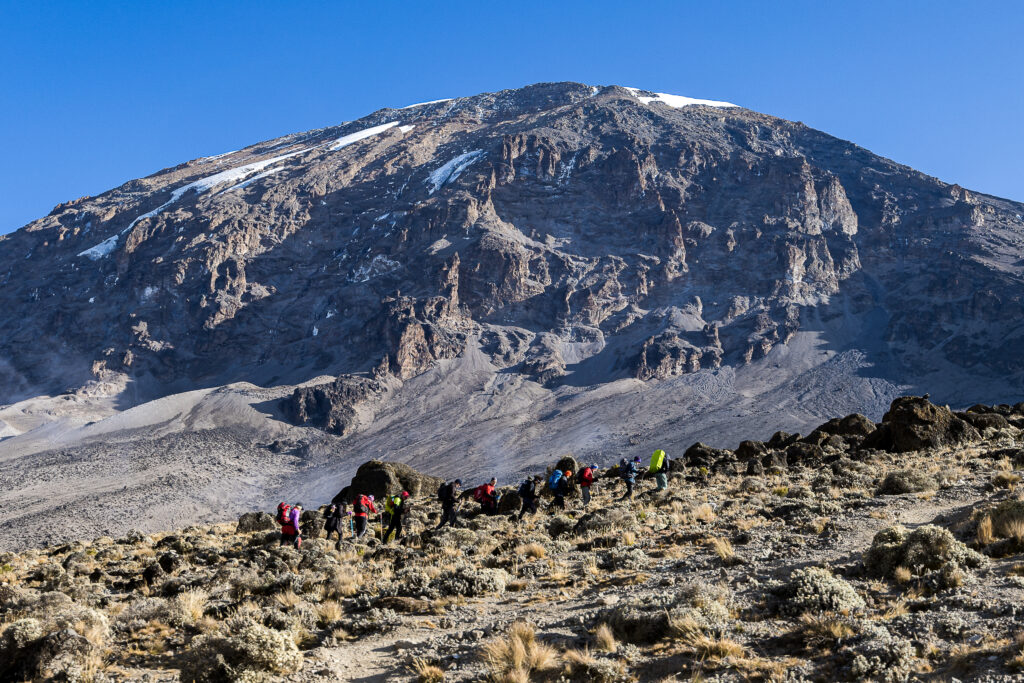
6. Barafu Camp to Uhuru Peak and back (Day 6))
The final ascent begins in the dead of night, usually between midnight and 1am. By the light of headlamps, you climb slowly into the freezing cold, often around -5 to -10°C, but sometimes as low as -15/-20°C. After around 5 to 7 hours of intense effort, you reach Stella Point (5,730 meters), then continue for around 1 to 2 hours to Uhuru Peak (5,895 meters), the highest point in Africa. The sunrise over the glaciers and distant plains is a breathtaking sight, rewarding the efforts made. After a moment at the summit to take some souvenir photos, you descend to Barafu camp for a well-deserved rest before continuing on to Mweka camp.
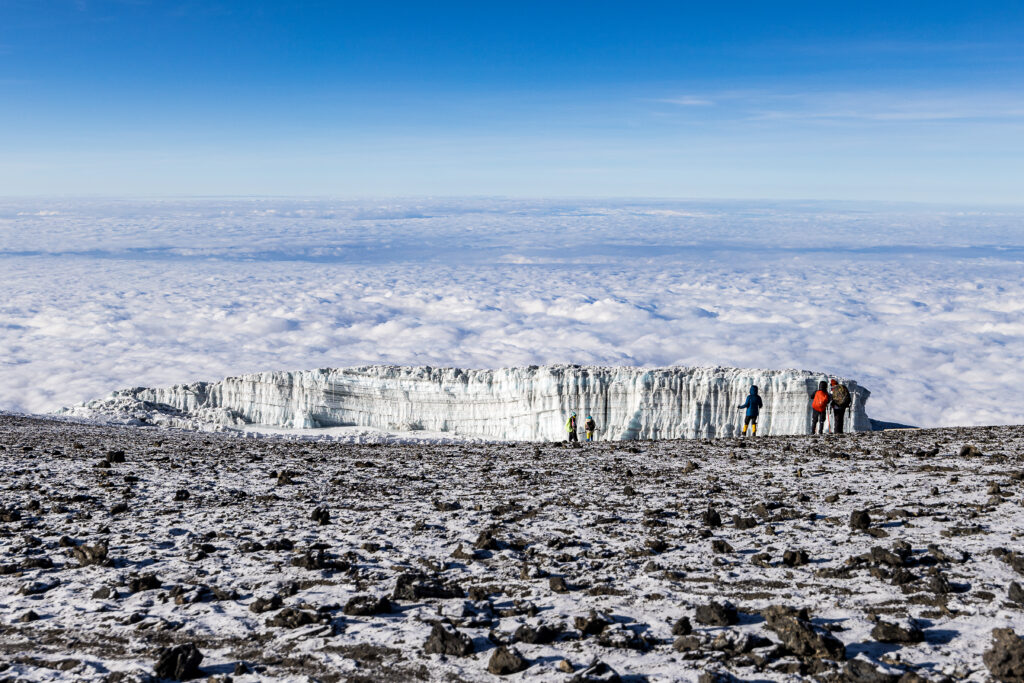
7. Final descent to Mweka Gate (7th day)
The descent takes you through increasingly green landscapes, returning to the warmth and humidity of the rainforest. At Mweka Gate (1,640 m), you receive a certificate of achievement, bringing this exceptional adventure to a close.
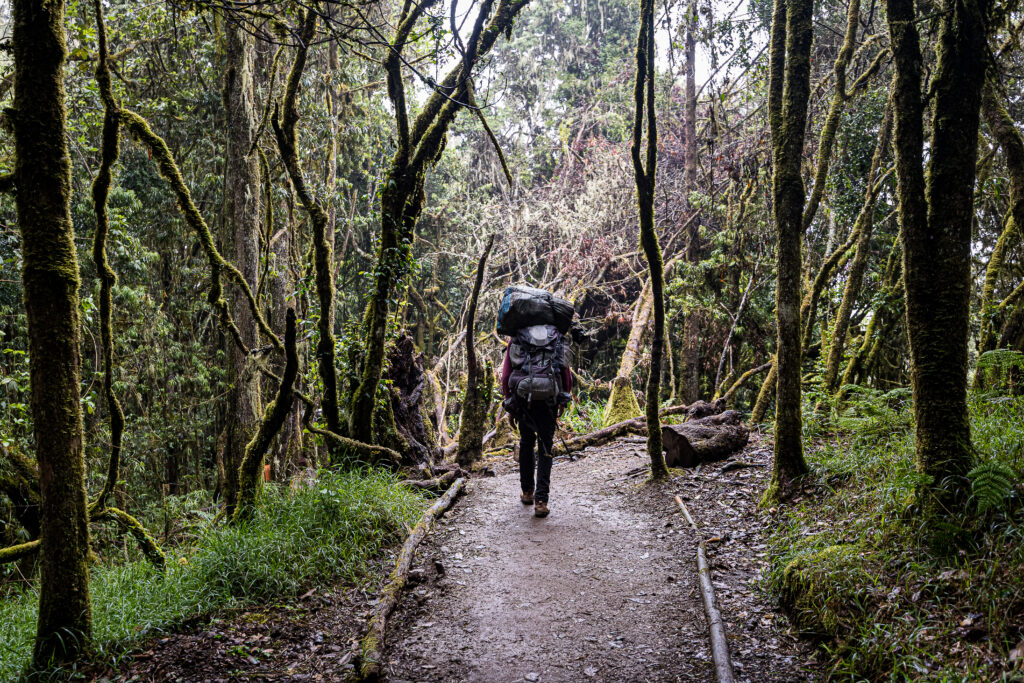
Acclimatization
Altitude can be a formidable and unpredictable enemy. And that, in my opinion, is the biggest risk on Kilimanjaro. To acclimatize well, you don't need to be a seasoned mountaineer, but your body needs to adapt slowly:
- Why is this crucial? Climbing too fast can cause symptoms of acute mountain sickness (headaches, nausea, fatigue). Moving slowly, drinking plenty of water and listening to your body are essential strategies.
- Adapted routes : Some routes, such as Lemosho or Machame, allow for natural acclimatization thanks to their extended duration. Choosing these routes puts all the chances on your side.
Remember: this is not a race. Respect your own pace and give your body time to adapt.
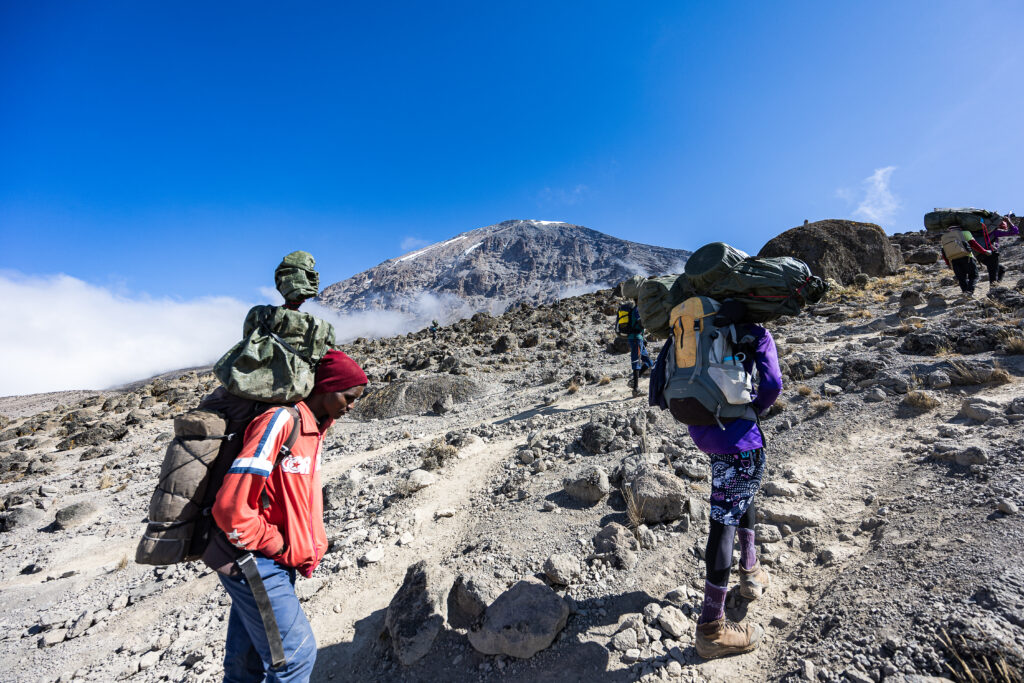
Kilimanjaro challenges
The climb is rewarding, but not without its obstacles. Here's what you'll have to overcome, in addition to acclimatization:
- Physical fatigue Hiking days can last from 5 to 12 hours, especially on the final ascent. Add to this a not always ideal night's sleep in a tent. And chances are your body will tire as the trek progresses. Managing your fatigue and energy is important, so rest as much as you can when you can.
- Extreme temperatures : From the heat of the tropical forests to the night frosts of the high plateaus, thermal variations call for appropriate equipment. The easiest way is to use the layering technique to adapt to the conditions. The sun passing behind the clouds or the wind picking up can cause temperatures to drop rapidly. Remember that on summit night, temperatures can reach -15 or -20 degrees Celsius. Being cold requires a lot of energy to warm up, and will make you tired more quickly.
To give you an idea, we had about 17 degrees at the start of theclimb and about -15 overnight to reach the summit. - Mental pressure : At altitude, every step can become a monumental effort. Keeping motivated is an ordeal in itself. Imagining climbing a mountain is a bit like running a marathon. It seems an immense task. Break down your route and your effort into smaller goals and take pride in reaching them one after the other. Celebrating each new camp reached, for example, can be a good way of keeping morale up and staying motivated. Don't forget that the most important thing is the journey and the adventure; the summit is a bonus and only half the battle. Don't put yourself at risk by trying to reach it at all costs.
These challenges are an integral part of the experience, and will give you a good taste of what the high mountains can be like.
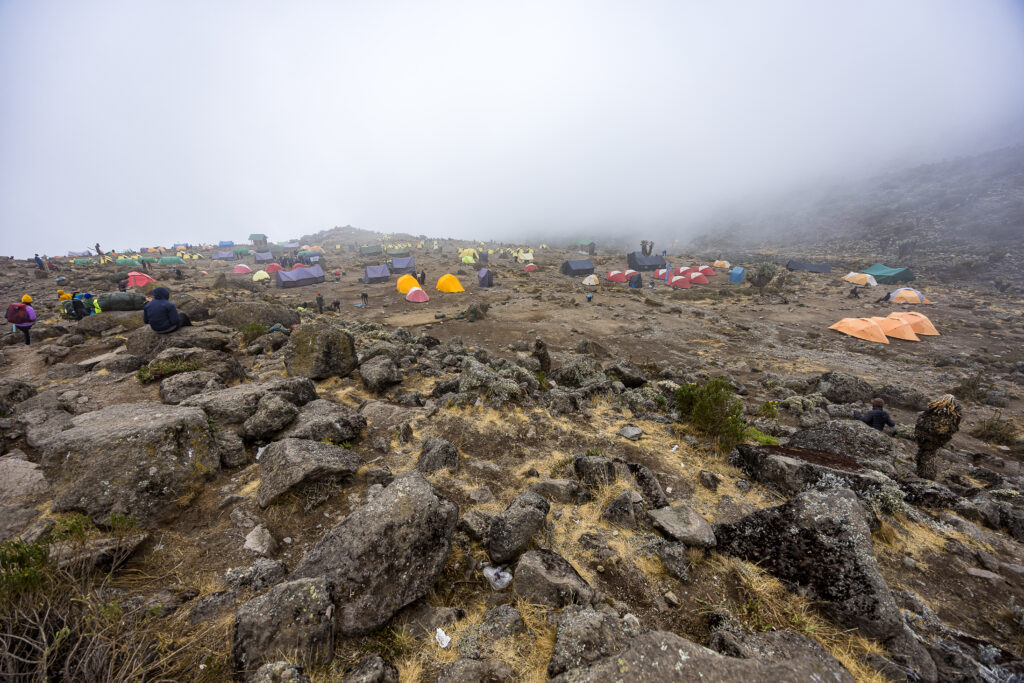
Kilimanjaro's landscapes and wildlife
Each stage of the climb reveals a unique ecosystem. Prepare to be amazed:
- Tropical forests Colobus monkeys, multicolored birds and dense foliage: this area is a small tropical paradise.
- Heathland areas Endemic plants like the giant ragwort and panoramas of raw beauty.
- Eternal snows The glaciers at the summit offer spectacular, postcard-perfect views.
Kilimanjaro is a varied world in itself.
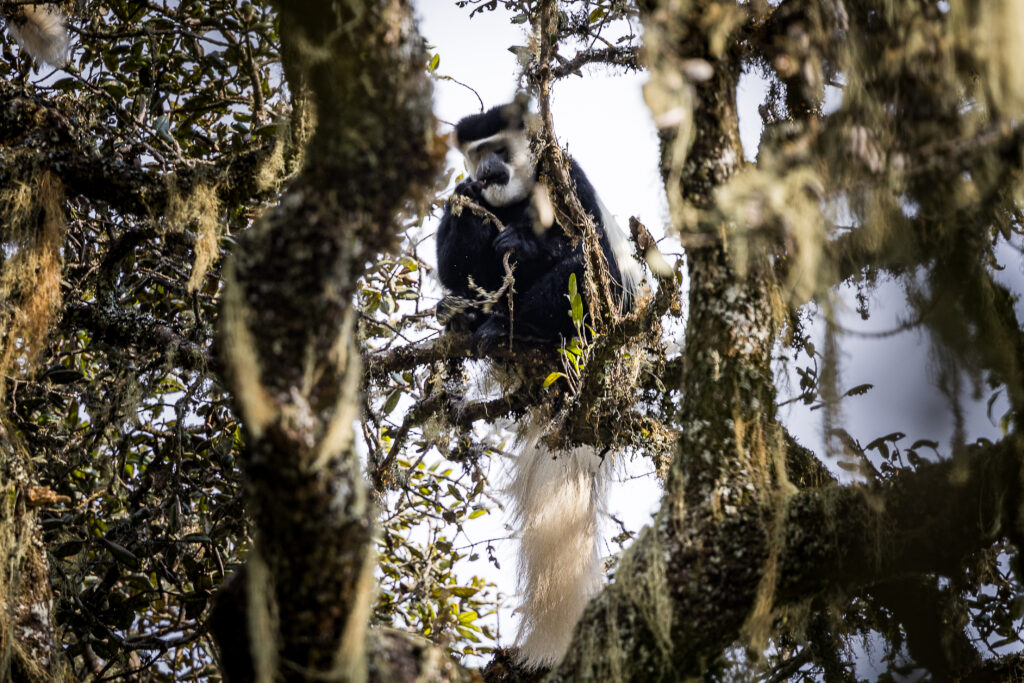
The weather
As is often the case in the mountains, the weather on Kilimanjaro is as unpredictable as it is varied. It can change from bright sunshine to icy wind in a matter of hours:
- At the foot of the mountain Pleasant temperatures, often between 20 and 27°C.
- At altitude The warmth rapidly fades, giving way to freezing nights, reaching -20°C at the summit.
- The rains Showers are frequent outside the dry seasons (April, May and November). Good waterproof equipment is essential. At altitude, rain easily turns to snow, especially at night.
In my case, we were there in October, just before the rainy season. We had a mixture of very fine weather, especially in the mornings, and foggy days. A little rain on the last two days.
Plan well and be prepared for any eventuality!
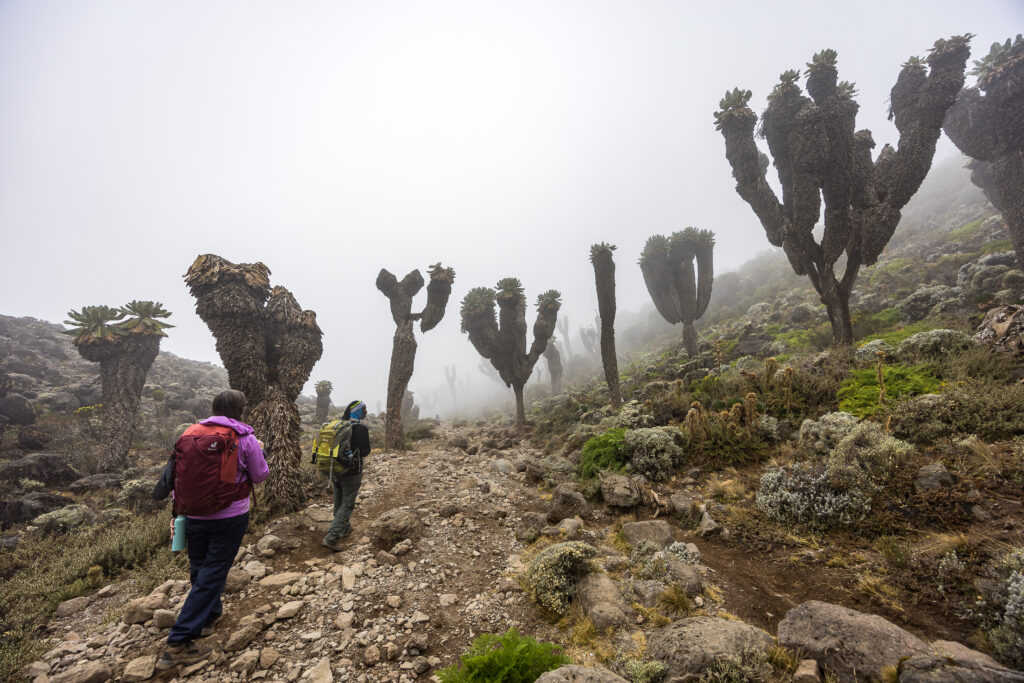
Kilimanjaro, a dangerous climb?
Although Kilimanjaro is accessible without technical mountaineering equipment, it remains a serious challenge. The dangers are mainly due to the altitude and the weather. Fortunately, with a good guide and appropriate preparation, the risks can be considerably reduced.
- Security Local teams are well trained and equipped to deal with emergencies.
- Physical condition : Good physical and mental preparation is your best weapon against the unexpected.
- A "safe" mountain Most mountains with a glacier are prone to avalanches or crevasses, which can make climbing dangerous. Fortunately, you won't find any of this on Kilimanjaro, making it a pretty safe mountain.
Finally, like any adventure, climbing Kilimanjaro involves risks, but if well prepared, it remains a safe and unforgettable experience.
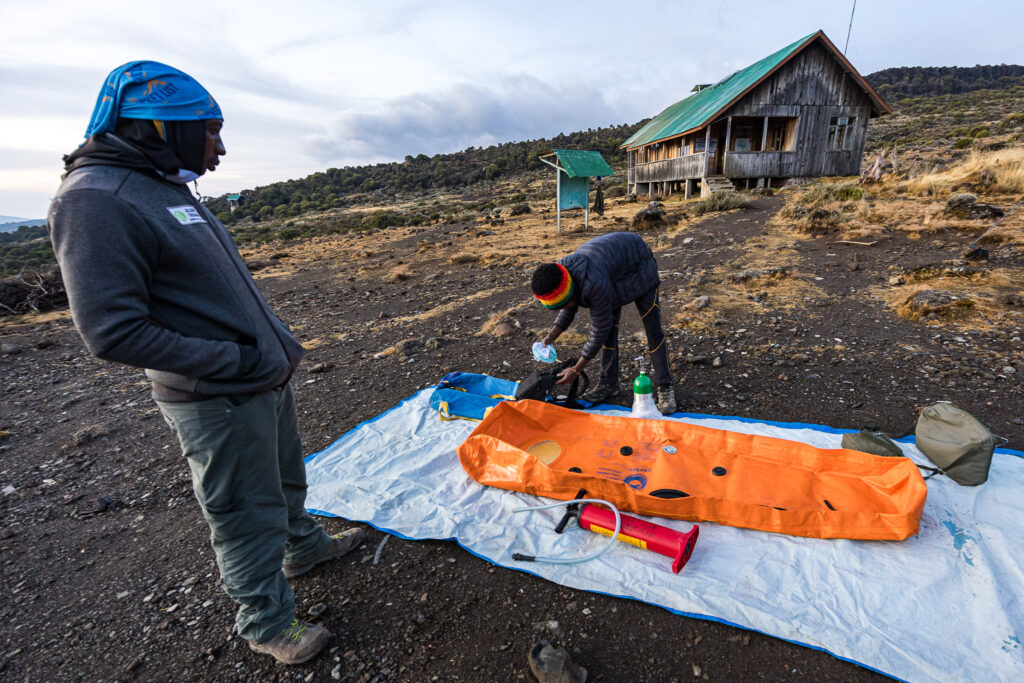
Kilimanjaro summit tips
The final stage of the Kilimanjaro ascent is undoubtedly the most demanding, but also the most rewarding. Summit day is a day of anticipation, stress, intense effort and indescribable emotion. Here are the keys to a successful day.
Getting up early for the final climb
The final ascent to the summit, which begins in the middle of the night, is a crucial moment. Why leave so early? It may seem counter-intuitive, but here are a few key reasons:
- Avoid the risk of ending thenight climbing: Although on a mountain like Kilimanjaro, the risks are very low, we're not immune to injury on the way up or down. This could greatly reduce your ability to move. To avoid a problem forcing you to descend at night, or worse, having to sleep on the way down, we prefer to leave as early as possible, so as to have as much time as possible to get back down during the day, in case of trouble.
- Reaching the summit at sunrise : nothing beats the golden light that illuminates the glaciers and the panorama of Africa just as you set foot on the Uhuru Peak. A show that makes you forget how tired you are.
- Optimizing weather conditions The wind and clouds tend to intensify during the day. Starting early reduces the risk of bad weather and optimizes your comfort.
Dress in layers for this climb: you'll start in freezing temperatures and end in bright sunshine. A reliable headlamp, well-fitting shoes and a positive frame of mind will be your best allies for this intense effort.
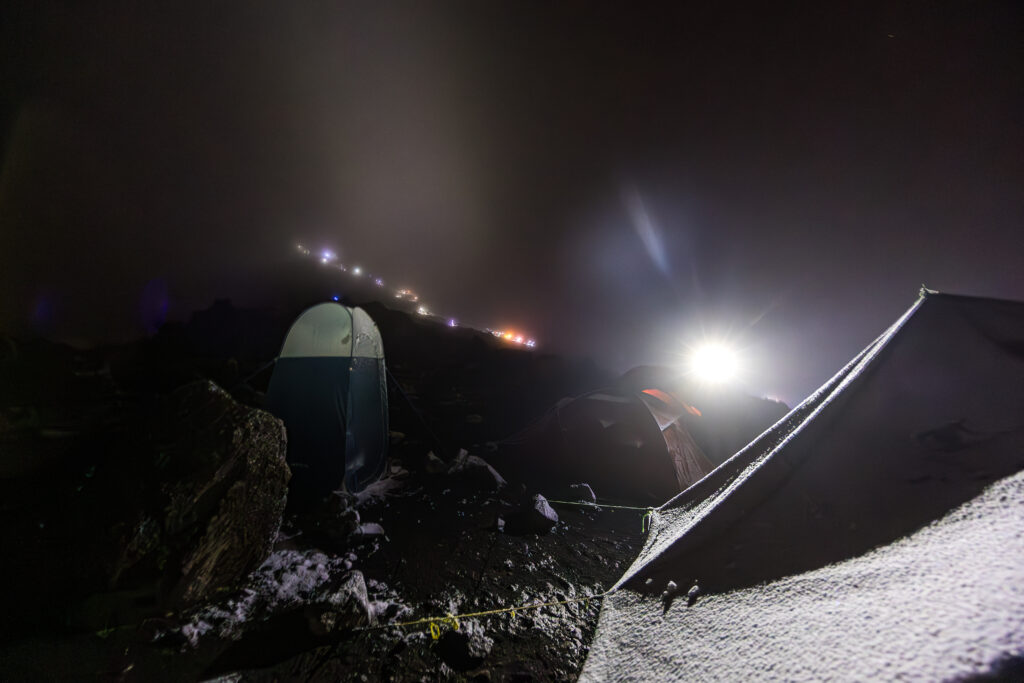
Managing the symptoms of altitude sickness
Altitude sickness is one of the major challenges throughout your ascent and also in reaching the summit. This specific day, with its rapid altitude gain, can test your physical and mental endurance like never before. To protect yourself, here's some practical advice:
- Moisturize constantly Drink small sips, but often. Dehydration amplifies altitude symptoms.
- Adopt a slow, steady pace Don't try to keep up with the fastest person in the group. Slow down and walk at a slow pace that feels natural to you. Sometimes you'll feel like you're going nowhere because you're so slow - that's normal. If this worries you, check with your guide that your pace is sufficient to reach the summit.
- Listen to your body If you experience severe headaches, nausea or extreme fatigue, report it immediately to your guide.
- Take a deep breath Air is scarce, but slow, conscious breathing maximizes oxygen intake.
- Consult upstream on medication Some hikers choose to use a drug like Diamox to alleviate the effects of altitude sickness. Discuss this with a professional. For any other medication, check with your guide before taking anything.
Remember: it's better to stop climbing than risk your health. The mountain will always be there for a future attempt.
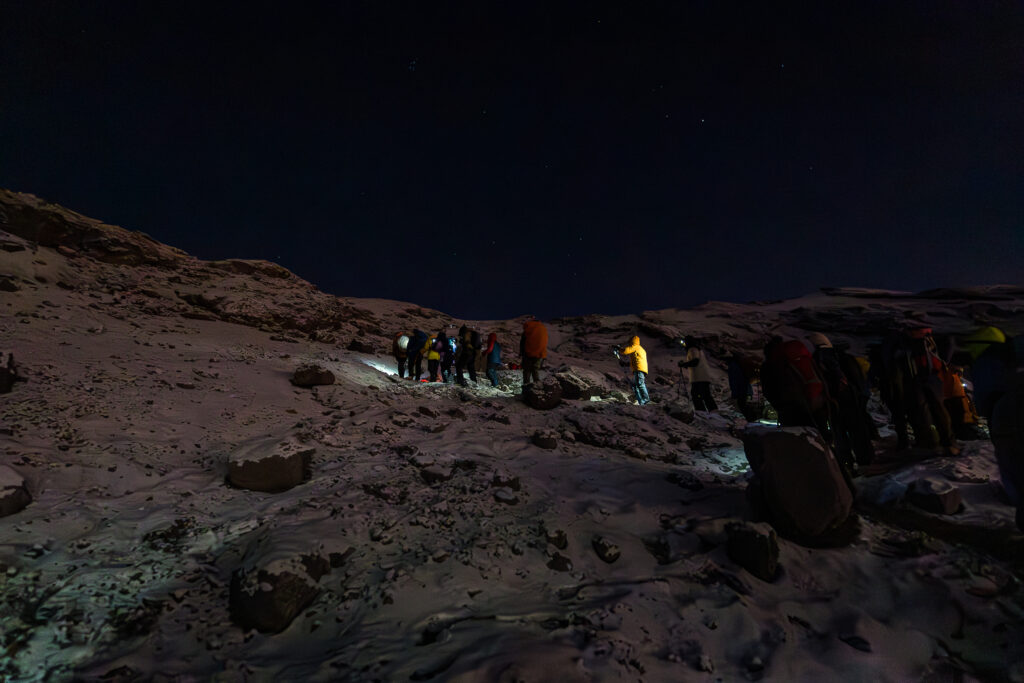
Celebrating the summit
Reaching the summit of Mount Kilimanjaro is a feat that often stays with you for the rest of your life. This moment, unique for every adventurer, deserves to be celebrated to the full. What can you do once you've reached the summit to make the most of it?
- Take photos facing the Uhuru Peak sign This shot is emblematic and immortalizes the effort made. So don't hurry, and make the most of it. But beware: you're not the only one who'll want to leave with your photo. Sometimes you have to wait a little before you can pose.
- Savor the moment Probably the most important, and one that is all too often forgotten! Close your eyes for a few seconds, feel the wind, admire the glaciers - a memory engraved in the mind surpasses any digital image.
Finally, it's time to head back down, because don't forget, only half the way is done. But chances are, once we reach Barafu camp, your team will be there to celebrate the summit with you. For us, it was a lovely surprise that brought tears to our eyes.
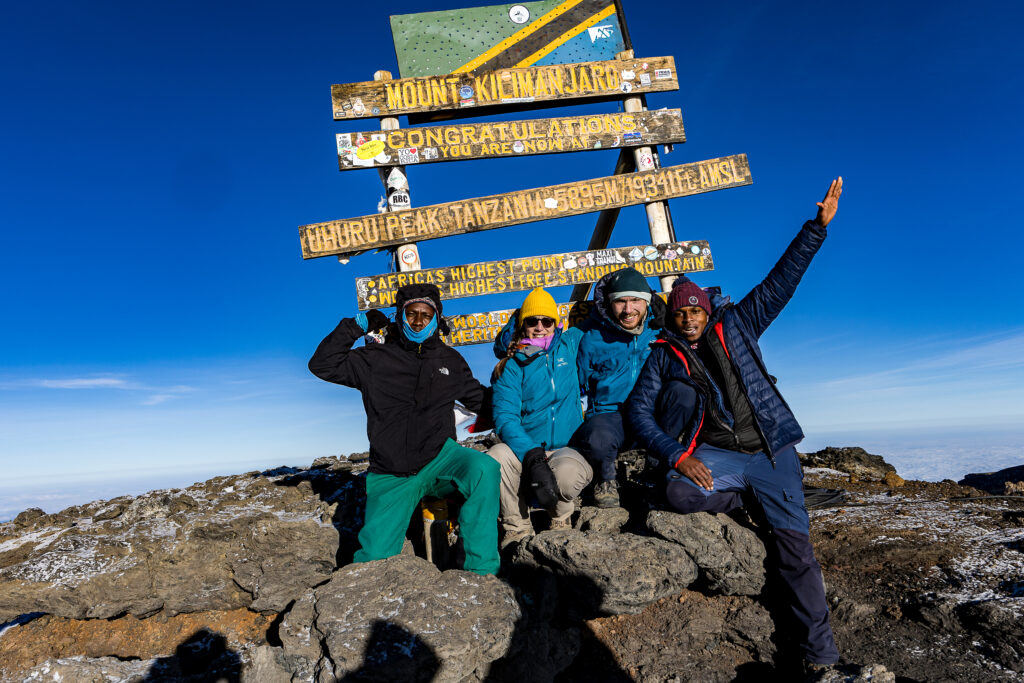
Budget for Kilimanjaro
Climbing Kilimanjaro is an accessible dream, but one that involves costs that need to be carefully anticipated. From expedition costs to tips and essential equipment, this investment needs to be detailed to avoid unpleasant surprises. Let's break down the main items of expenditure.
Climbing price
Prices vary according to the itinerary chosen, the length of the trek and the services offered. On average, you should expect to pay between 1900 $ US and 4000 $ US per personexcluding international flights.
- Marangu (5 to 6 days): Approximately 1900 $ US to 2200 $ USThanks to its infrastructure, this route is often the least expensive.
- Machame or Lemosho (7 to 8 days)) : These routes generally cost between US$2400 $ and US$3200 $ USbecause of their length and spectacular views.
- Local vs. international operator : Booking with a local agency can reduce costs, but be sure to check their reputation. We personally dealt with Hors Piste, certainly not the cheapest, but we were satisfied. We would have preferred a local agency like in Nepal, but we couldn't find one that suited us.
Although I advise you to check your quotation, in general, prices include :
- Park fees (approx. 600 $ at 800 $ depending on duration)
- Accommodation/tents during the ascent
- Guides, porters and cooks
- Meals in the mountains
In addition to the cost of the climb, add the international flight (between 800 $ and 1600 $) and accommodation before and after the trek. If you book with an agency, accommodation and transfers to and from the airport will usually be included in your final price.
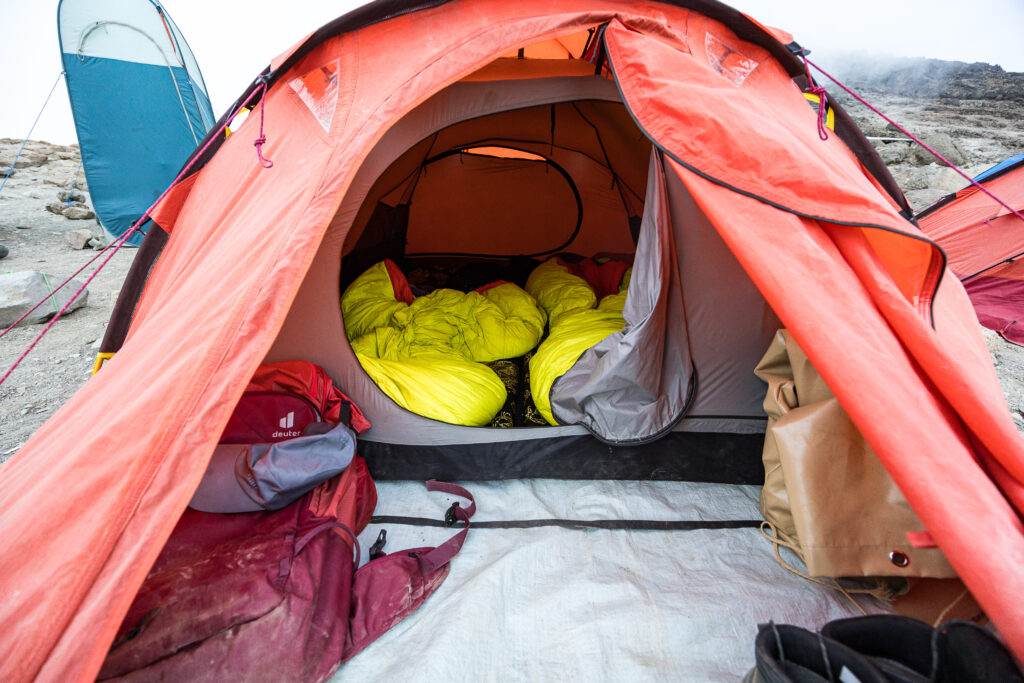
Tips
Tipping is an integral part of climbing Kilimanjaro, rewarding the local team for their indispensable help. They are often an essential supplement to their income. Generally speaking, the agency will provide you with a range for tips depending on the role. Here's an example:
- Guides Approx. 15 to 20 $ per day and per person
- Carriers Approx. 5 to 10 $ per day per person
- "Super Carrier Approx. 6 to 12 $ per day and per person
- Cooks Approximately 10 to 15 $ per day and per person
For two of us, we had 12 people to accompany us (2 guides, 1 cook, 3 super porters and 6 porters) for 6 days, representing a total of around 300 $ to 400 $ per customer in our case.
It can be a lot of money, but it's really important for the people on your team, so please don't cut corners to save money.
It's also worth noting that these tips are paid in cash, so you should ideally plan to withdraw the money before starting your expedition. There are no ATMs on the mountain, so you'll usually have to return to town to withdraw money.
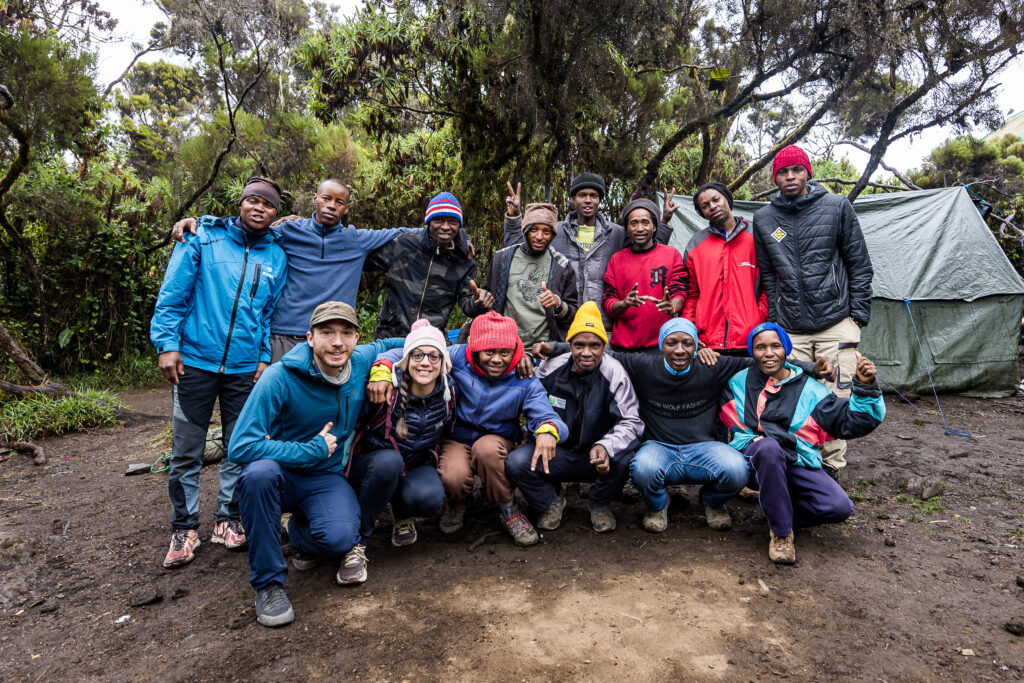
Price of equipment to rent or buy
You don't need to invest in top-of-the-range equipment if you're not planning any further high-mountain expeditions. If you're used to winter sports or hiking, you should already have most of the equipment you need.
If you're missing something and don't want to invest, much of the equipment can be rented on site. Here's an estimate of the cost of equipment:
- Rental in Tanzania :
- Sleeping bag: 15 $ to 20 $ per hike
- Jackets or down jackets: 10 $ to 15 $ per piece
- Walking poles: 5 $ to 10 $
- Upstream purchasing :
- Sturdy hiking boots: 100 $ to 200 $
- Technical clothing (thermal layers, fleeces): 150 $ to 300 $
- Backpack: 100 $ at 150 $
- Accessories (headlamp, water bottles, gloves): 50 $ to 100 $
If you have to buy all the equipment, the budget can rise to 500 $ to 1000 $ moreBut it can guarantee greater comfort and future use.
Planning your budget well will make your adventure more serene. I hope I've covered everything so far?
Recommended agencies for Kilimanjaro
If you're planning to climb Kilimanjaro, using the right agency is an important step in guaranteeing safety, pleasure and success. Local agencies, experienced guides and porters, play an essential role in transforming this demanding adventure into a unique and unforgettable experience. Let's take a look at some reliable options and why these experts are indispensable.
Tips for choosing an agency
- Check ethical standards A good agency must respect its local teams (porters, guides, cooks). The well-being of these professionals has a direct impact on the quality of your experience. Remember, too, that your ethics are not always the same as those of the agencies or the local populations. Don't hesitate to ask specific questions if you're not comfortable with certain practices.
- Compare routes and services Some agencies specialize in routes such as Machame or Lemosho. Make sure the agency offers an itinerary suited to your walking ability and schedule.
- Consult customer reviews Reviews: browse feedback from former trekkers to assess the agency's reliability and the quality of its service.
- Go local By choosing an agency based in Tanzania, you support the local economy and benefit from expertise directly from the field. I always recommend using a local agency, even if in our case on this trip it was an international agency that convinced us.
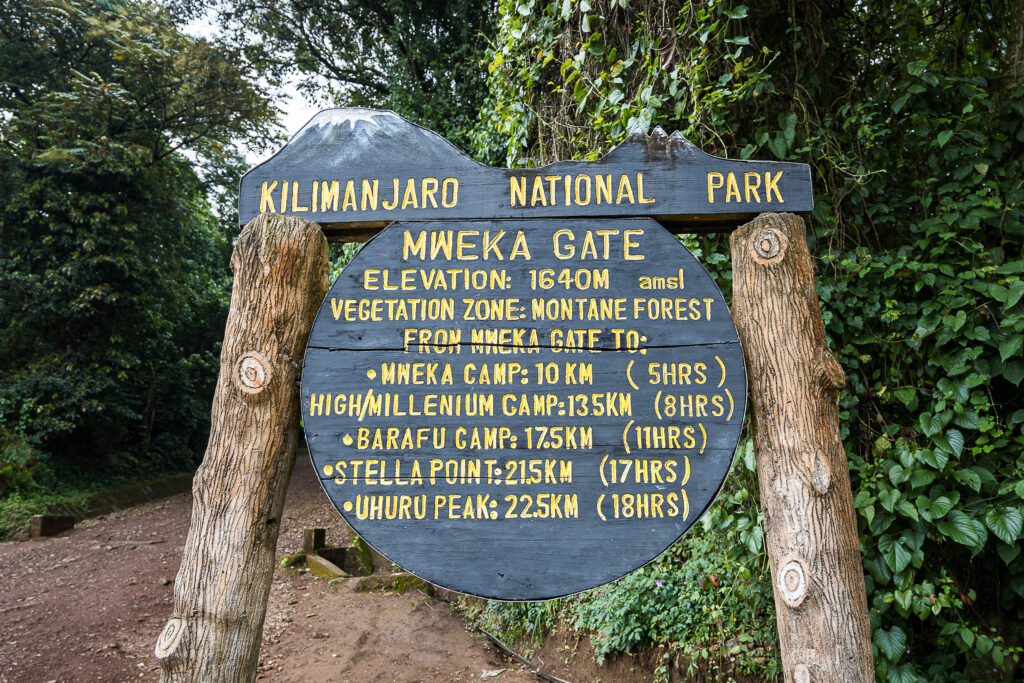
International trekking agencies
- Off-track Tanzania This is the agency we chose (I should point out that we weren't paid to give this opinion). The agency has a good reputation in Tanzania. They offer à la carte holidays, and you can, like us, choose to combine Kilimanjaro with safaris or a stay in Zanzibar. They offer one group ascent of Kilimanjaro per month, otherwise they offer a private package which is a little more expensive. They also offer the possibility of having a French-speaking guide, which was our case.
Please notehave not tested the services of the following agencies, I'm mentioning them here because I've heard about them on other blogs or fromother travelers.
- Allibert Trekking A specialist in trekking in Tanzania, we are renowned for our commitment to responsible, sustainable practices. Explore popular itineraries such as Machame or Lemosho thanks to their expertise.
- Nomade Aventure A perfect choice for those seeking treks in small groups, with friendly organization and experienced guides. Their watchwords: simplicity and authenticity.
- Altezza Travel Altezza: known for its high-end services, Altezza guarantees a smooth experience with certified guides, ideal for demanding trekkers. You've got to love big groups; we've come across them several times with groups of over 15 clients.
- Climb Kili A company known for its focus on safety and comfort, this agency offers well-designed itineraries to help you reach the summit with peace of mind.
- Zara Tours Pioneering in Tanzania, this agency combines experience and reliability, offering memorable treks.
- Monkey Adventures Accessible to all budgets, this agency adapts to your needs with flexibility, while maintaining a high level of expertise.
- Kazaden Kilimanjaro: An agency known for its varied services and itineraries on the main Kilimanjaro routes. French-speaking guides are also available.
- Tanzania Specialist A specialist in top-of-the-range holidays, this agency guarantees a well-organized and comfortable ascent.
Local trekking agencies
Please notehaven't tested the services of these agencies, I'm mentioning them here because I've heard about them on other blogs or fromother travelers.
- Kilimanjaro Heroes Adventures (Moshi) We are recognized for our professionalism and ethical treatment of porters and guides. This ensures a humane and responsible experience.
- Martours and Safaris Ideal for more modest budgets, this agency offers good value for money while guaranteeing reliable services.
- Gate to Zion Specializing in immersive experiences, this agency offers tailor-made itineraries combining adventure and comfort.
- Kenya Bush Expeditions The perfect way to combine trekking with exploring the wonders of Kenya and Tanzania. Their offer includes ascents of Kilimanjaro.
- Lomo Safari Lomo Safari offers authentic adventure in national parks and up to the summit of Kilimanjaro.
- Eramatare For an immersion between tradition and modernity, Eramatare offers dedicated accompaniment on Kilimanjaro and beyond.
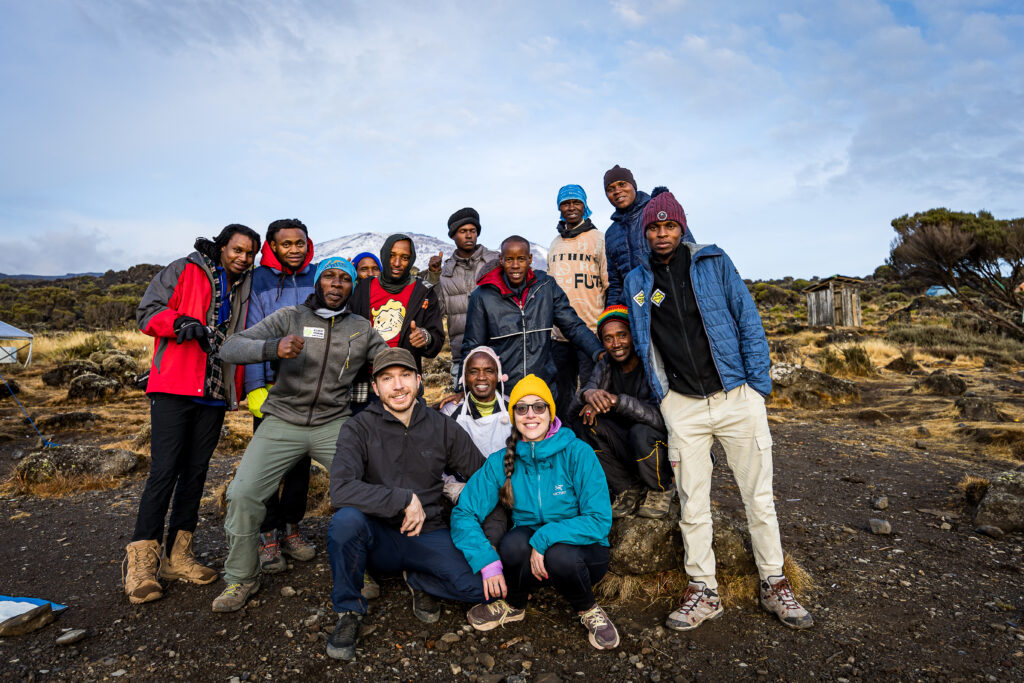
Is it possible to climb Kilimanjaro without guides and porters?
Climbing Kilimanjaro in Tanzania without a guideis not allowed. Tanzanian government regulations require climbers to be accompanied by certified guides and often porters. This is to ensure climbers' safety, protect the fragile environment, and support the local economy through tourism-related jobs.
Why is a guide compulsory on Kilimanjaro?
- Safety : Altitude and weather conditions can be dangerous. Guides are trained to deal with emergencies such as acute mountain sickness.
- Route knowledge They know every detour, every rest zone and the best strategies for managing your progress and altitude.
- Environmental protection : The guides ensure (most of the time...) that local rules are respected, thus preserving the unique ecosystem of Kilimanjaro National Park.
- Legal regulations : Kilimanjaro is located in a protected national park (Kilimanjaro National Park), and entry is subject to a fee.
- Moral support When fatigue strikes, their encouragement often makes all the difference in holding on.
Kilimanjaro porters: compulsory or not?
Although their use is systematic, use of carriersis not a legal requirement. If you wish to carry your own belongings, this is permitted. However, luggage, kitchen equipment and camps often require logistical support.
The role of the porters goes far beyond mere assistance - they are your allies throughout the journey. They set up and dismantle camps, help the cook prepare meals, serve meals, take care of the toilets... In short, they do more than just carry equipment.
Believe me, if this is your first experience of high altitude or long trekking, you'll be very glad to have porters to help you.
The alternative:
If you have a lot of experience and your aim is to have a more autonomous experience, talk to the trekking agency you choose. You can negotiate to minimize the presence of porters, or for a guide who understands your preference for self-sufficiency and autonomy.
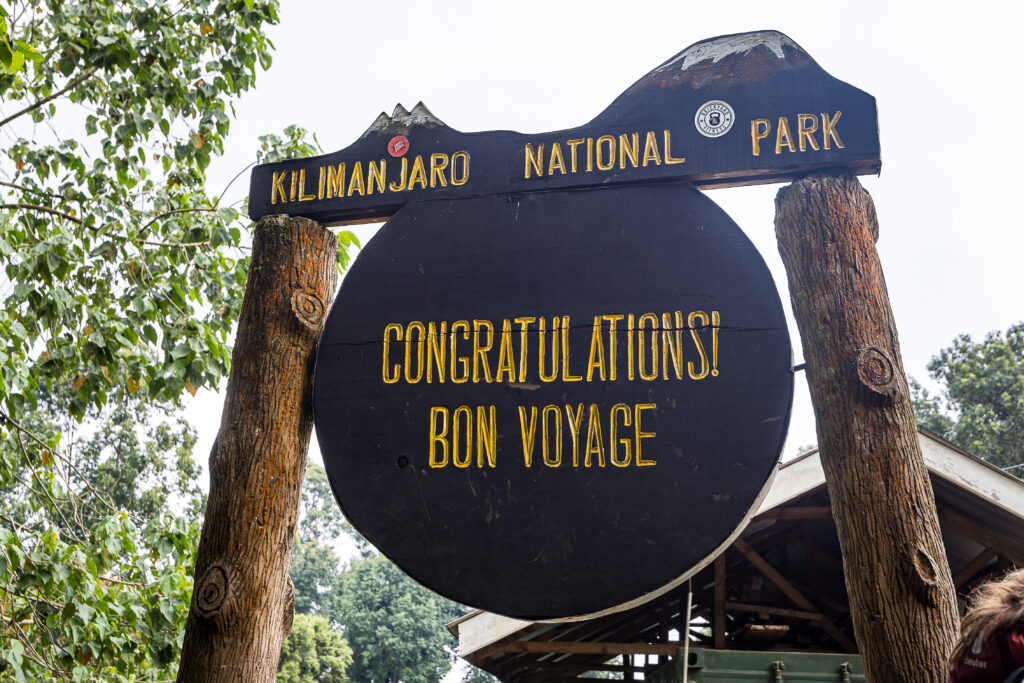
Conclusion of my Kilimanjaro experience
Climbing Kilimanjaro is more than just an adventure. Every element, from meticulous preparation to breathtaking scenery to reaching Uhuru Peak, reflects a deep connection with nature and a personal challenge. It's not just about climbing a mountain, but experiencing a unique transformation.
Whether it's managing the altitude, the starry nights above the clouds, or the incredible support of local porters and guides, every moment of the trek brings its share of unforgettable memories. And though imposing, this mountain is, for many, a metaphor for perseverance and surpassing oneself.
Climbing Kilimanjaro is both an adventure and a cultural change of scenery, and you're bound to make unforgettable memories.

